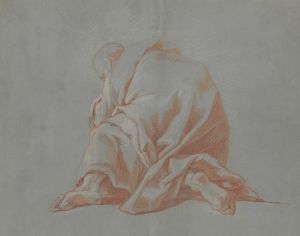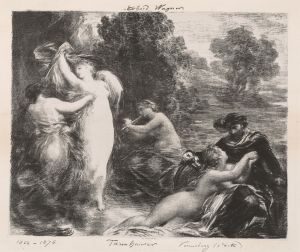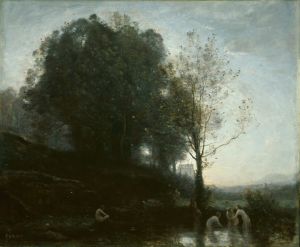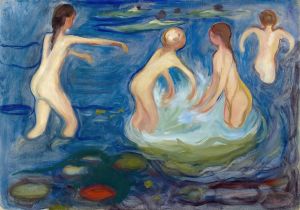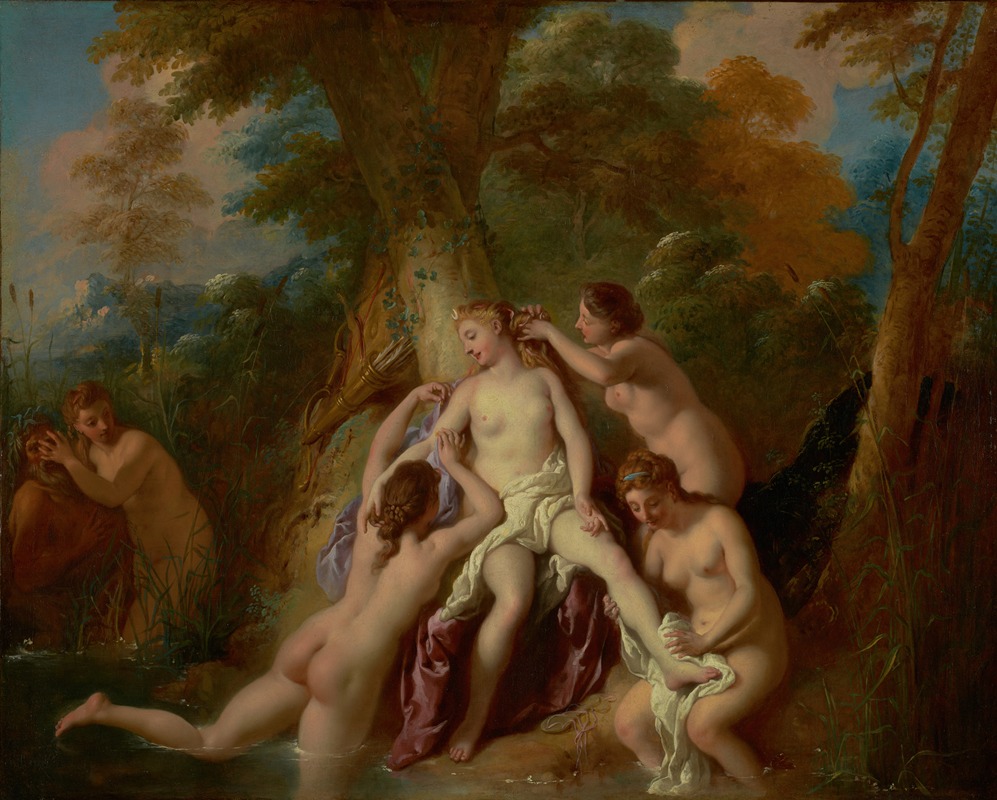
Diana and Her Nymphs Bathing
A hand-painted replica of Jean-François de Troy’s masterpiece Diana and Her Nymphs Bathing, meticulously crafted by professional artists to capture the true essence of the original. Each piece is created with museum-quality canvas and rare mineral pigments, carefully painted by experienced artists with delicate brushstrokes and rich, layered colors to perfectly recreate the texture of the original artwork. Unlike machine-printed reproductions, this hand-painted version brings the painting to life, infused with the artist’s emotions and skill in every stroke. Whether for personal collection or home decoration, it instantly elevates the artistic atmosphere of any space.
Jean-François de Troy was a notable French Rococo painter and tapestry designer, known for his elegant and dynamic compositions. One of his works, "Diana and Her Nymphs Bathing," exemplifies his skill in capturing mythological themes with a sense of grace and movement. This painting, created in the early 18th century, reflects the Rococo style's emphasis on lightness, fluidity, and decorative charm.
"Diana and Her Nymphs Bathing" depicts the Roman goddess Diana, known as Artemis in Greek mythology, who is associated with the hunt, the moon, and chastity. She is often portrayed in art as a youthful and athletic figure, accompanied by her retinue of nymphs. In this painting, de Troy captures a serene and intimate moment as Diana and her nymphs engage in the act of bathing, a common motif in art that symbolizes purity and the natural world.
The composition of the painting is carefully arranged to draw the viewer's eye across the scene. Diana is typically positioned prominently, embodying her role as the leader of the group. The nymphs, depicted with varying poses and expressions, add a sense of liveliness and interaction to the scene. De Troy's use of soft, pastel colors and delicate brushwork enhances the ethereal quality of the painting, creating a dreamlike atmosphere that is characteristic of the Rococo period.
The setting of the painting is a lush, idyllic landscape, which serves as a backdrop to the figures. This natural environment not only highlights the theme of purity associated with Diana but also reflects the Rococo fascination with nature and the pastoral. The interplay of light and shadow in the painting adds depth and dimension, further emphasizing the harmonious relationship between the figures and their surroundings.
Jean-François de Troy's ability to convey narrative through visual art is evident in "Diana and Her Nymphs Bathing." The painting invites viewers to imagine the story behind the scene, drawing on their knowledge of mythology and the cultural significance of the characters depicted. This engagement with the audience is a hallmark of de Troy's work, as he often infused his paintings with a sense of drama and storytelling.
"Diana and Her Nymphs Bathing" is a testament to de Troy's mastery of the Rococo style and his contribution to the artistic landscape of 18th-century France. His work remains appreciated for its elegance, attention to detail, and ability to capture the essence of mythological subjects. While specific details about the painting's provenance and current location may not be widely documented, its significance within de Troy's oeuvre and the broader context of Rococo art is well recognized.
In summary, "Diana and Her Nymphs Bathing" by Jean-François de Troy is a quintessential example of Rococo art, showcasing the artist's talent for depicting mythological themes with grace and sophistication. Through its composition, color palette, and narrative elements, the painting continues to captivate audiences and stands as a notable work in the history of French art.











